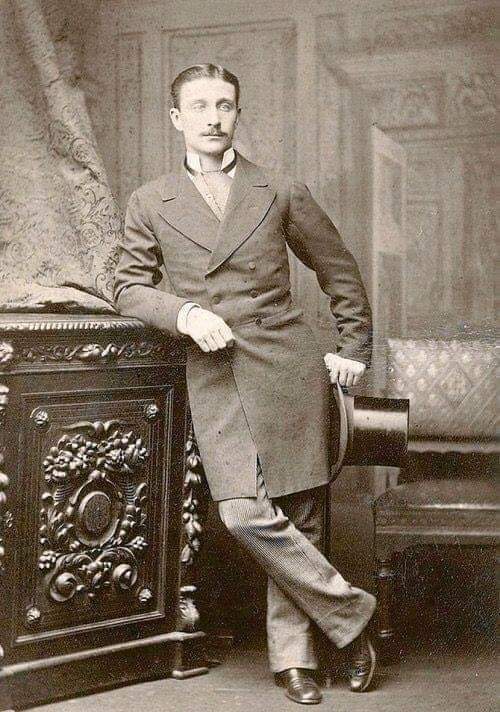History of the Prince Imperial Louis Napolean
Prince Impérial, Louis Napoléon
16 March 1856 – 1 June 1879
Napoléon Eugène Louis Jean Joseph Bonaparte, only son of the Emperor Napoléon III and the Empress Eugénie, (the Countess of Teba and the Marchioness of Moya, Grandee of Spain of the 1st class), came out with the British re-inforcements after the battle of Isandlwana. As the Prince Imperial was the grandson of King Louis of Holland, Napoleon I’s younger brother, he was the great-nephew of Napoleon I.
The Prince Imperial was educated to succeed as emperor of the French and since he bore a famous name, his entire upbringing was very closely associated with the military and the service and duty that he owed to his country as a Child of France. Like his parents, he was a particularly skilled equestrian. He was also an accomplished fencer. During the Franco Prussian War, as a boy of fourteen, he accompanied his father to the front. He left Paris for the war in uniform, bearing the rank of sub-lieutenant. After France’s defeat by Prussia at the battle of Sedan, he was smuggled across the Belgian border to Hastings in England. His mother joined him there later, while his father was detained as a prisoner of war for six months at Wilhelmshöhe, in Prussia. After his release, the imperial family settled in Camden Place in Kent.

Tragedy struck when the sorely-undermanned group off-saddled in the Jojosi valley, near to a supposed deserted kraal. The patrol was surprised by a horde of Zulu warriors. Two soldiers were killed, as well as the guide. The rest galloped off across the dongas. The Prince, unable to mount a bucking and rearing horse, grabbed the holster-strap in an effort to hoist himself up, but the strap broke and he fell. The horse trampled his right arm, his sword fell from his waist in the scramble and he was left to face his foes. His slayers said of him: he fought like a lion, and we did not dare to close ’til he sank down facing us. Thus, in a distant land, were shed the last drops of blood of the Bonaparte dynasty. The Prince’s body was recovered the following day and brought down from Zululand via Pietermaritzburg to the coast, and hence back to England. He was initially buried in St Mary’s church, Chislehurst, but in 1888, his remains together with those of his father, were re-interred in St Michael’s Abbey, Farnborough, Hampshire.


What the Prince imperial would have looked like traveling here in 1879. The portrait, taken by the Brothers Kisch. in Durban in April 1879, show him as he would have looked like once he was here.
In the autumn of 1872 until January 1875, the Prince entered the Royal Military Academy at Woolwich, as a Gentleman Cadet. He acquitted himself admirably, refusing any “princely” dispensations and passed out seventh overall.
After the disaster at Isandlwana, he obtained permission from Queen Victoria and the Duke of Cambridge, Commander-in-Chief of the British army, to come out with the British reinforcements as a “special observer”. He arrived in Cape Town on 26 March 1879, stayed for 2 days during which time he visited False Bay and Constantia and enjoyed a reception at Government House. He sailed on to Durban where he disembarked on 31 March 1879. He was attached to the staff of Lord Chelmsford as an extra aide-de-camp. He stayed in Durban for 19 days and then came up to Pietermaritzburg where he spent 6 days. He was a guest of the Governor in Government House, he attended mass in the French-missionary-built St Mary’s chapel, and he visited a local hotel which was renamed in his honour after his visit. Then, with the other soldiers, he set off from Fort Napier on 26 April 1879, for Zululand, via Ladysmith and Dundee. During the British advance into Zululand the Prince was a member of Colonel Harrison RE Acting-Quarter-Master’s forward column. A gifted reconnaissance scout, the Prince set out on the ill-fated 1 June, in a group comprising Lieutenant Carey, 6 Troopers of Bettington’s Horse and a guide, to choose the camp for the army’s march on Ulundi to engage with Cetshwayo, the Zulu king. Debate rages as to who was in charge on that day; the English officer, Brenton Jaheel Carey or the Prince Imperial who had no official military status?

A year later his mother, the Empress Eugénie, undertook the long voyage to South Africa to follow in her son’s footsteps. She spent the night in vigil at the very spot where he died on the first anniversary of his death. When the Empress died in 1920, she was buried in the same Abbey, in the imperial family’s crypt, behind the altar.
Glenn Flanagan: Project Initiator and Leader (1993): French Presence in KwaZulu-Natal/La Route du Prince Imperial, Louis Napoleon.